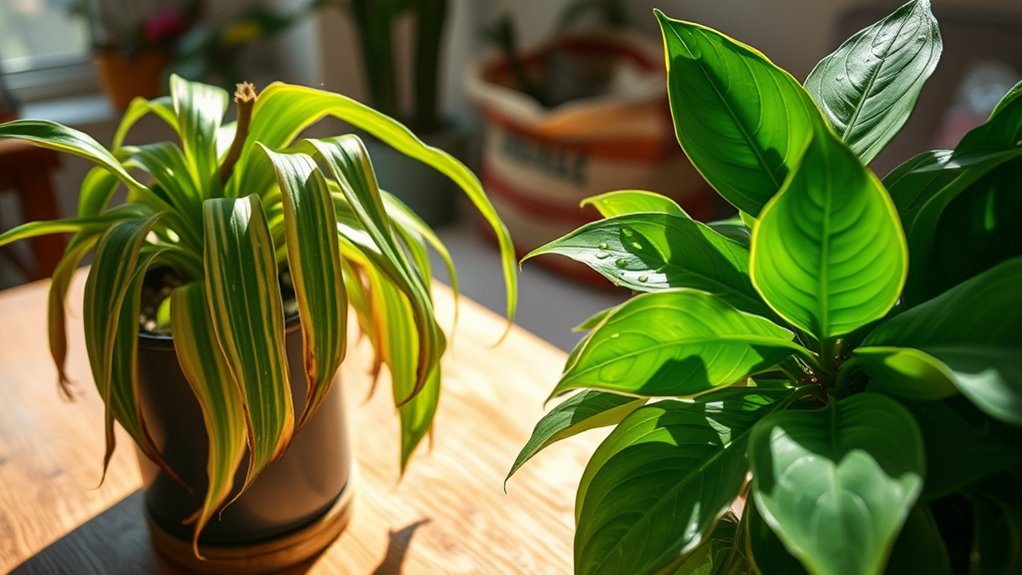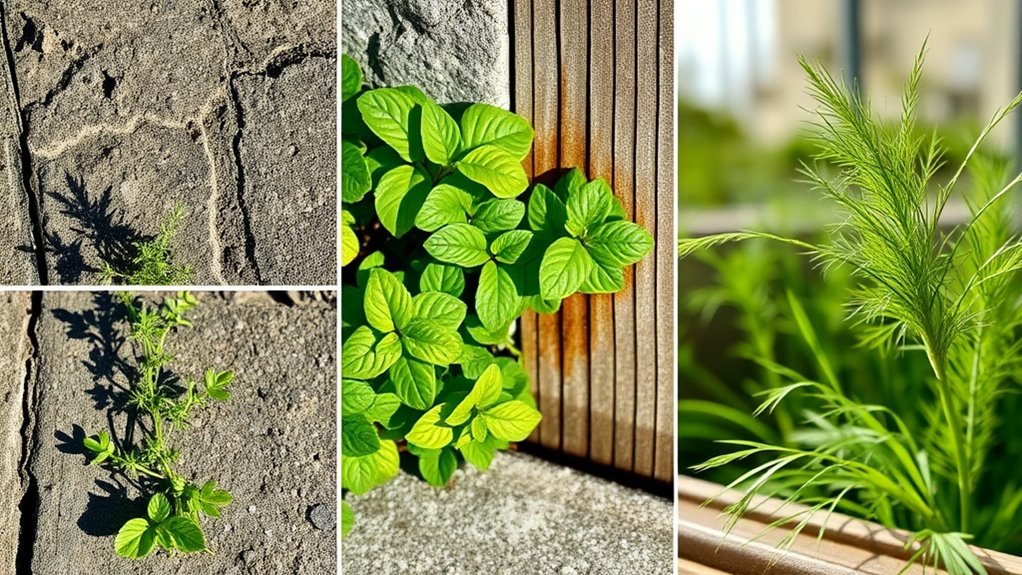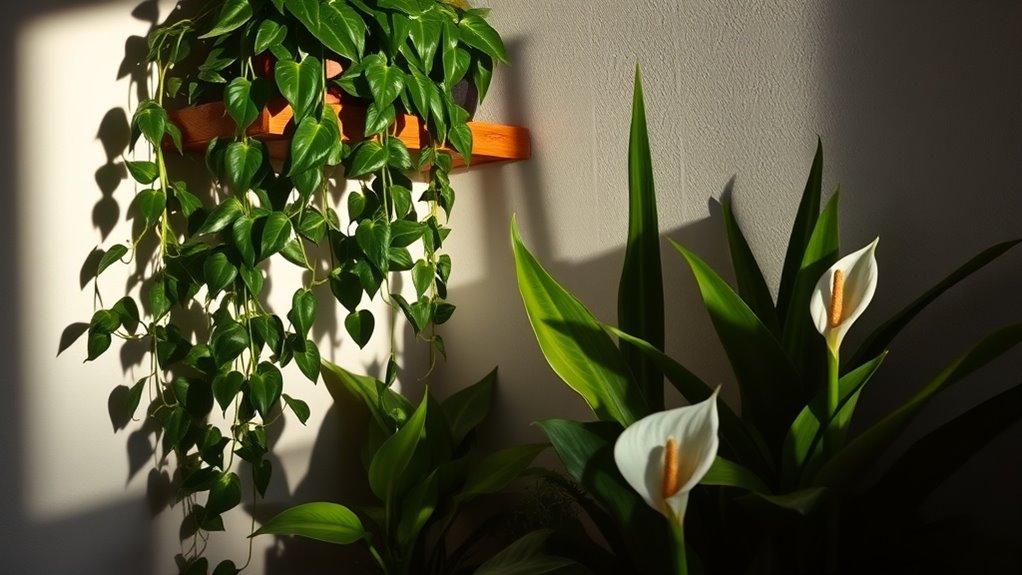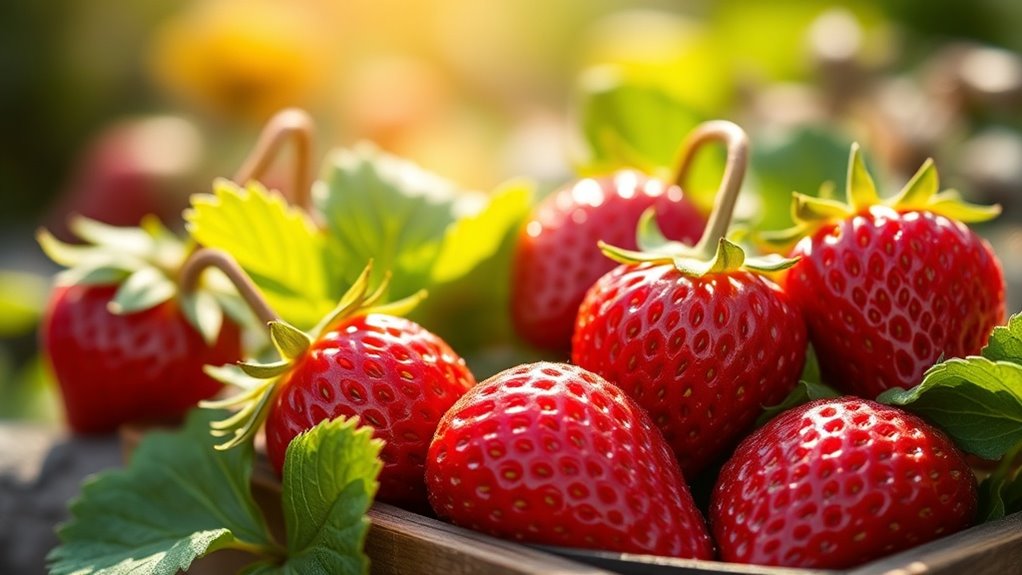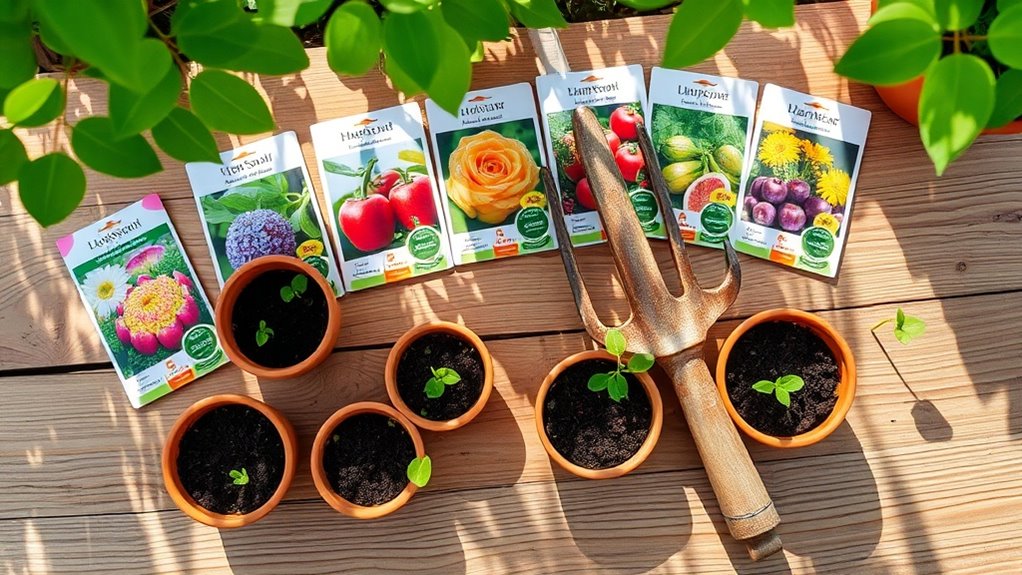Why Your Plants Keep Dying-and How to Fix It Fast
If your plants keep dying, it’s crucial to identify the underlying issues quickly. Overwatering, insufficient light, and poor soil quality may be sabotaging your efforts. You might also overlook pests or temperature fluctuations affecting growth. By addressing these factors, you can turn your plant care around. But how do you pinpoint the exact problem? Let’s explore these common pitfalls and discover effective solutions to revive your greenery.
Key Takeaways
- Overwatering causes root rot; check soil moisture before watering and ensure pots have proper drainage.
- Insufficient light can lead to leggy growth and yellowing leaves; assess your plant’s light needs and use grow lights if necessary.
- Poor soil quality can stunt growth; test soil pH, incorporate compost, and aerate regularly to improve fertility and drainage.
- Pest infestations result in wilting and discoloration; inspect plants regularly and treat infestations promptly to minimize damage.
- Temperature extremes stress plants; maintain a stable environment between 65°F and 75°F and protect plants during harsh weather conditions.
Overwatering: The Silent Killer
Overwatering is a silent killer that often goes unnoticed until it’s too late.
When you water too much, the roots can’t breathe, leading to root rot and nutrient deficiencies.
To avoid this, follow essential plant care tips: always check the soil moisture before watering, and ensure your pots have proper drainage.
Consider using a moisture meter for accuracy.
Remember, it’s better to underwater than overwater.
Keeping a consistent watering schedule tailored to your plant’s needs can prevent these issues and help your plants thrive. Additionally, understanding proper hydration is key to maintaining healthy plants.
Insufficient Light: A Common Mistake
Many plant owners underestimate the light requirements of their greenery, leading to poor health and growth.
Different plants have unique needs, and failing to provide adequate light can result in signs like leggy growth or yellowing leaves.
Understanding these requirements is crucial for successful plant care and ensuring your plants thrive. Additionally, incorporating resilient low-light indoor plants can help you maintain a lush environment even in dim spaces.
Light Requirements Vary by Plant
Understanding that light requirements vary by plant is crucial for maintaining a thriving indoor garden.
Different species have distinct needs; some thrive in low light, while others require bright, direct sunlight.
For instance, succulents and cacti demand ample light to flourish, whereas ferns prefer shadier spots.
It’s important to assess your plants’ specific needs and match them with your available light conditions.
If you’re unsure, researching each plant type can provide clarity.
Adjust your placements accordingly, and consider using grow lights if natural light is insufficient.
Signs of Insufficient Light
Are your plants looking droopy or discolored?
If so, you might be dealing with insufficient light. This common mistake can lead to frustration and plant loss.
Here are four signs to watch for:
-
Yellowing leaves – A clear indicator that your plant isn’t getting enough sunlight.
-
Leggy growth – Stretched stems reaching for light can signify desperation.
-
Slow growth – If your plant isn’t thriving, it may crave more illumination.
-
Leaf drop – Losing leaves can be a plant’s way of coping with inadequate light.
Adjusting their light exposure can quickly revive your plants and restore your gardening joy.
Poor Soil Quality: The Foundation of Health
While you may focus on watering and sunlight, poor soil quality often undermines your plants’ health more than you realize.
Compacted or nutrient-deficient soil can stunt growth and lead to weak plants. It’s essential to test your soil’s pH and nutrient levels before planting. Incorporating organic matter, like compost, can improve soil structure and fertility. Additionally, watch for signs of struggling soil, such as poor drainage and low plant vigor, which can indicate underlying issues that need addressing.
Ensure proper drainage to prevent waterlogging, which suffocates roots. Regularly aerating the soil helps promote root development.
Pest Infestations: Hidden Threats
Pest infestations can be insidious, often going unnoticed until it’s too late.
Here are four signs you shouldn’t ignore:
- Wilting Leaves: Even with proper watering, wilting can indicate sucking pests at work.
- Discoloration: Yellowing or browning leaves may signal damage from pest activity.
- Webbing: Fine webs often mean spider mites have taken residence.
- Stunted Growth: If your plants aren’t thriving, hidden pests might be stealing their nutrients.
Additionally, using natural sprays can help to effectively repel pests and protect your plants.
Address these issues quickly to protect your plants from further damage.
Temperature Extremes: The Impact on Growth
What happens to your plants when they face temperature extremes?
High or low temperatures can stress your plants, stunting growth and weakening their overall health.
When it’s too hot, they may wilt or scorch, losing vital moisture.
Conversely, cold temperatures can halt growth entirely, leading to root damage and even death.
You might notice yellowing leaves or drooping stems as signs of distress.
To protect your plants, maintain a stable environment, ideally between 65°F and 75°F.
If you can’t control outdoor temperatures, consider using protective covers or moving them indoors during extreme weather.
Keeping them comfortable ensures vibrant, thriving growth. Additionally, optimal temperature range is crucial for various species, as some may require specific conditions to thrive.
Nutrient Deficiencies: Feeding Your Plants Right
Temperature extremes can make your plants more vulnerable to nutrient deficiencies, which can hinder their growth and vitality. To ensure your plants thrive, focus on these essential nutrients:
- Nitrogen: Promotes lush foliage and overall growth.
- Phosphorus: Supports root development and flowering.
- Potassium: Enhances disease resistance and overall health.
- Calcium: Aids in cell wall structure and prevents rot.
Regularly test your soil and adjust your fertilization routine accordingly. Additionally, incorporating eggshells as fertilizer can provide a natural source of calcium and improve soil health.
By addressing these deficiencies, you’ll empower your plants to flourish, bringing you joy and satisfaction in your gardening efforts. Don’t let nutrient gaps stifle their potential!

